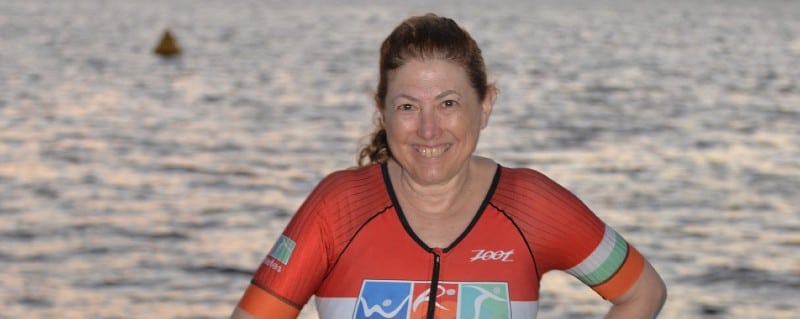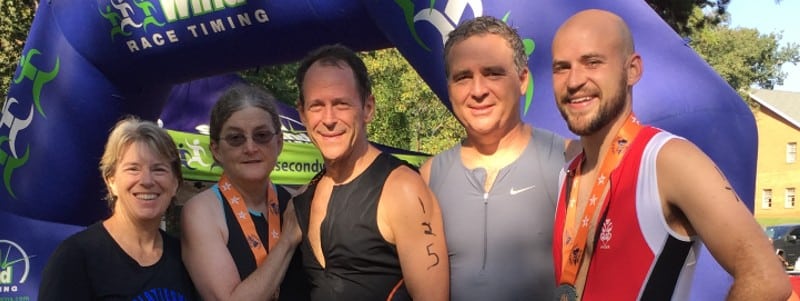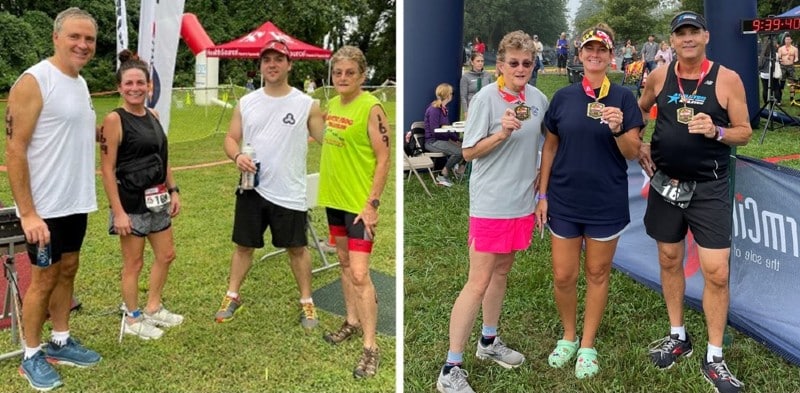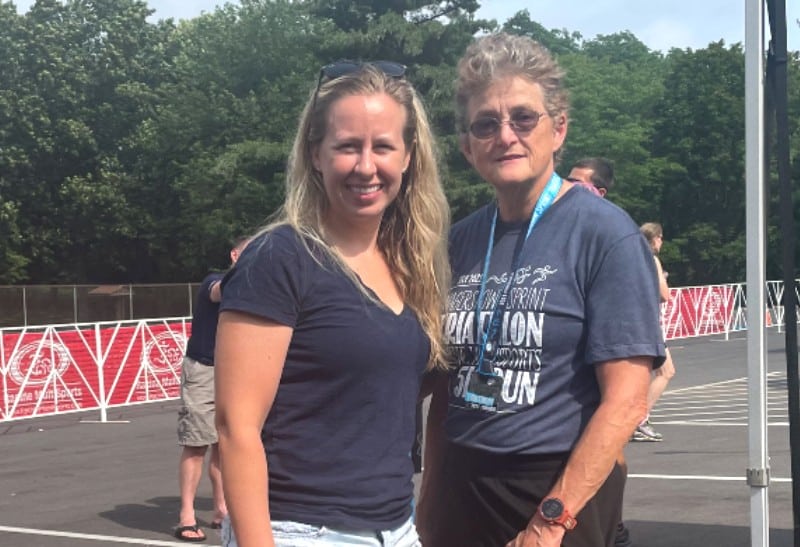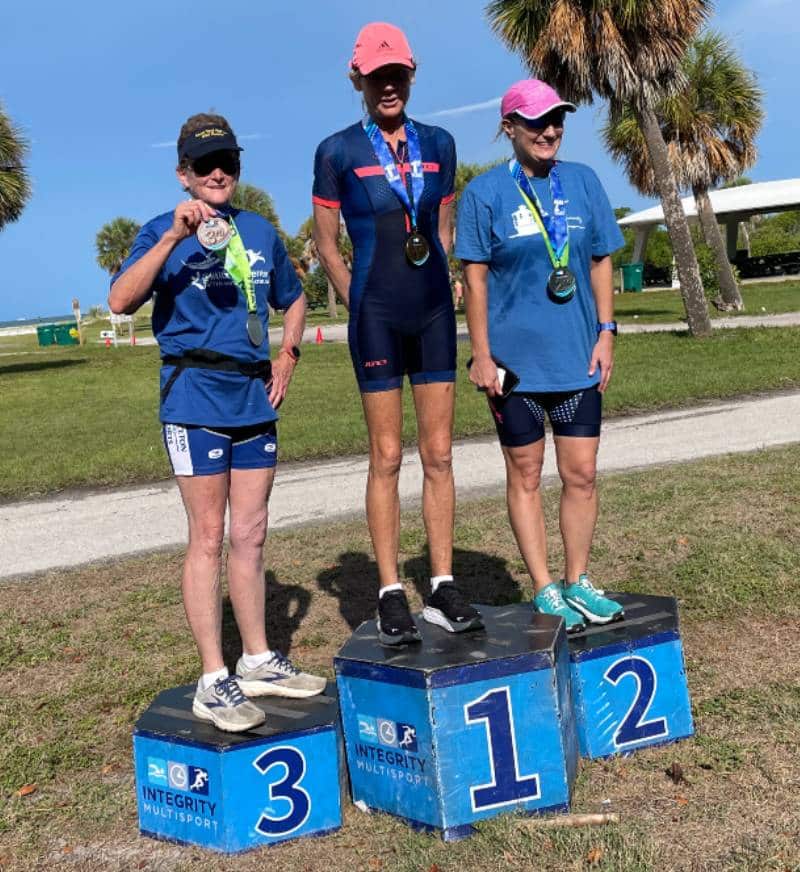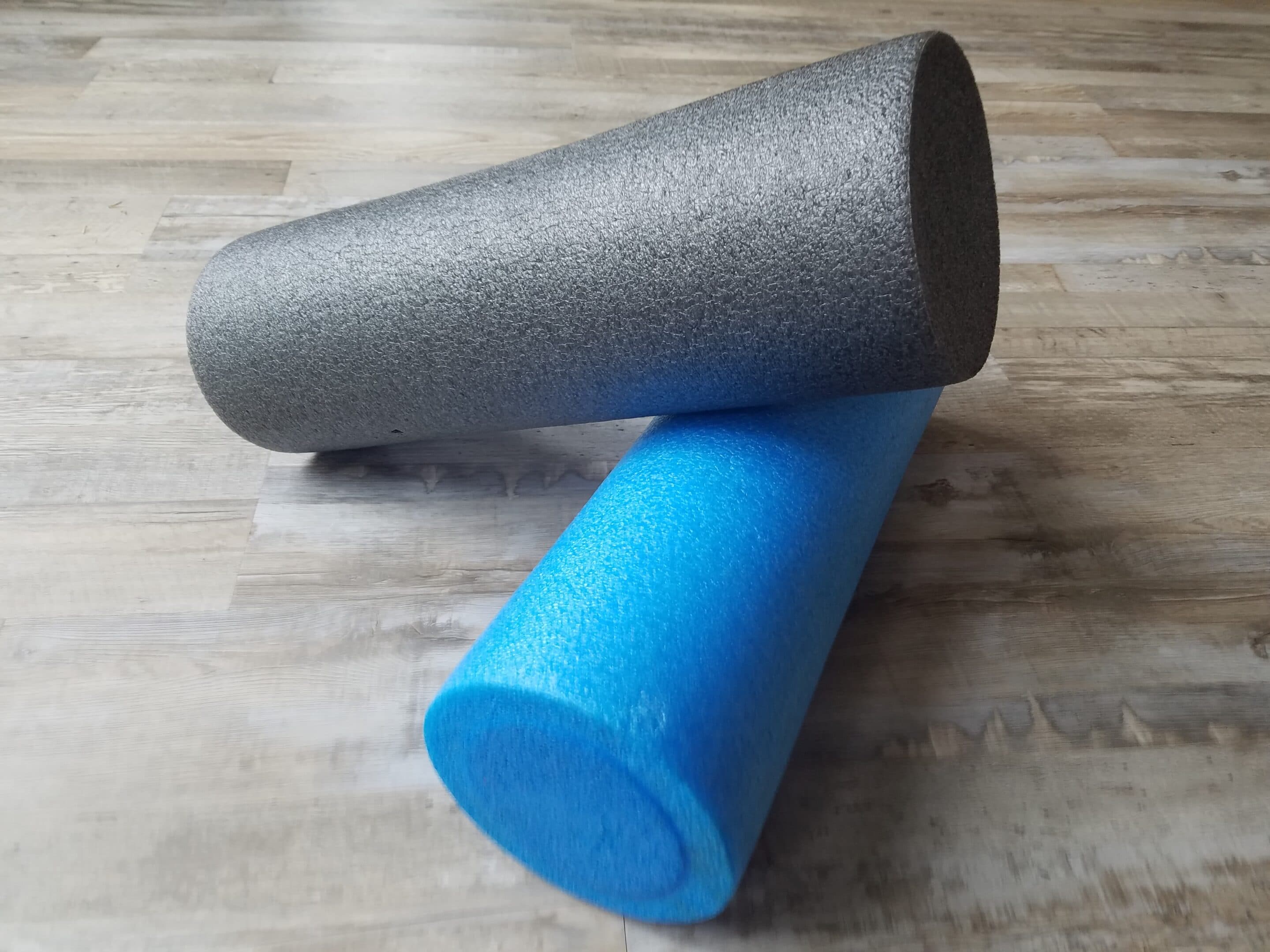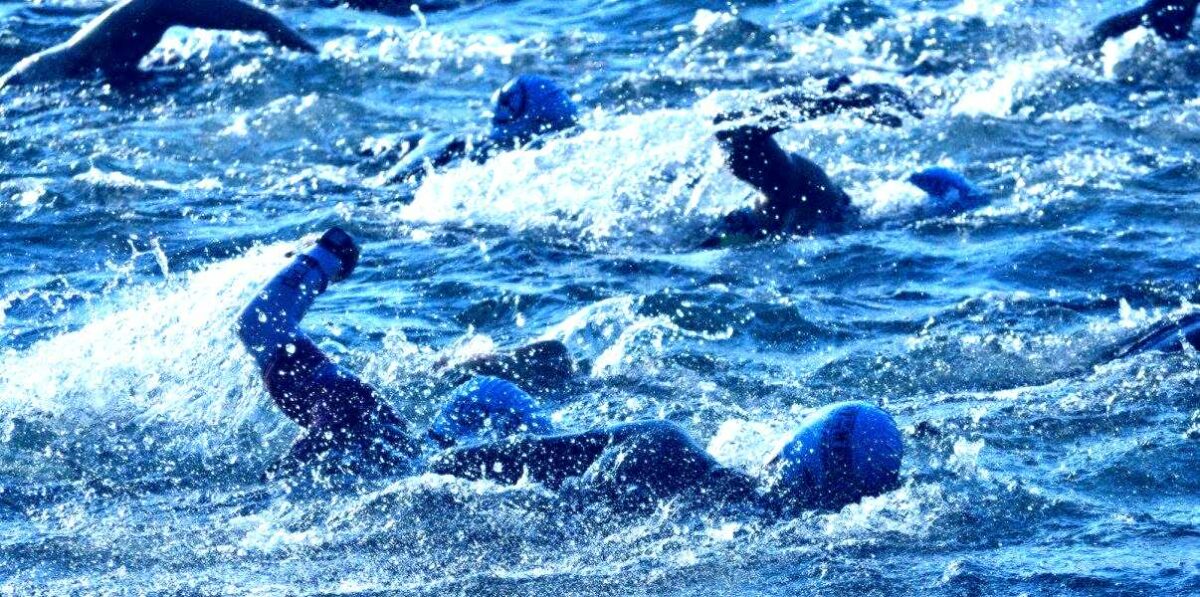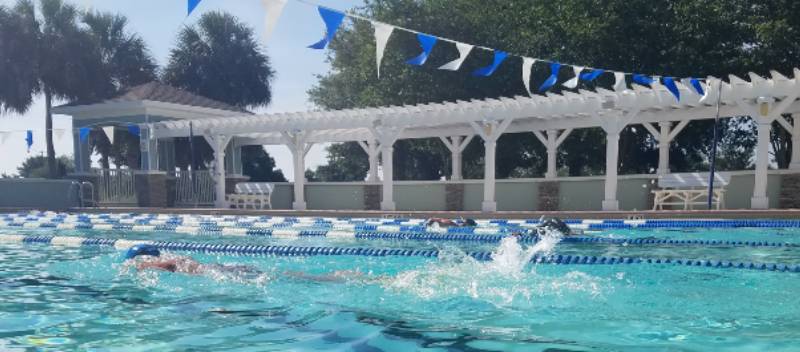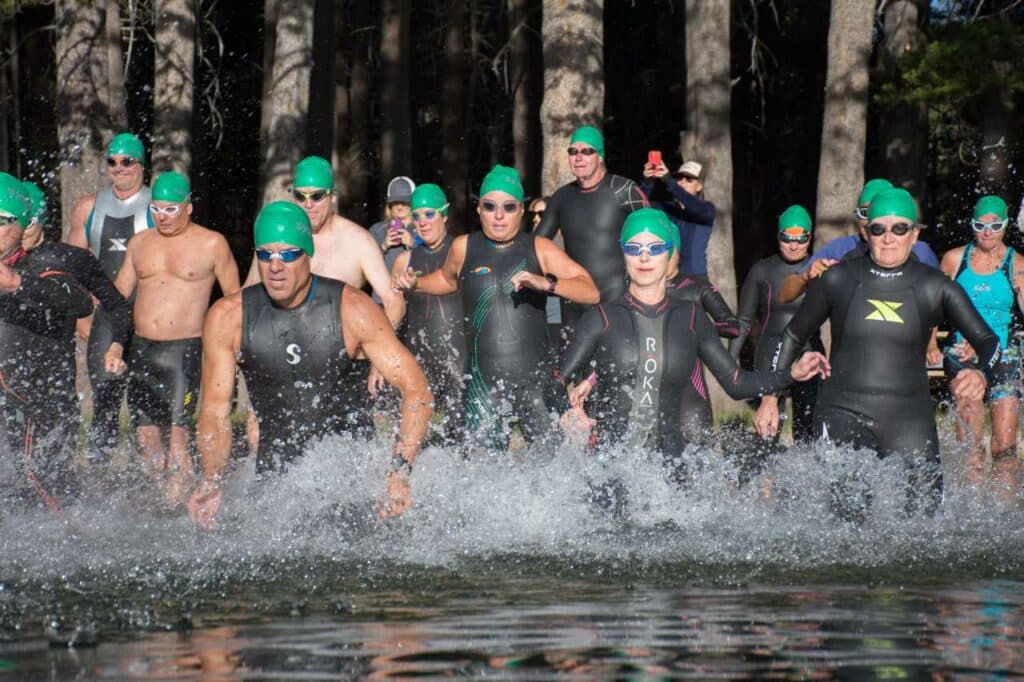Book Review: Triathlon Story of Senior Triathlete Hilary Topper
Senior triathlete Hilary Topper is a cheerleader for everyone who has ever struggled with self doubt about their ability to take on a new challenge, like doing a triathlon. She has dedicated her story to ‘back-of-the-packers’, those who compete for the thrill of setting and completing a challenging goal with no expectation of winning an award.
Hilary’s book, titled From Couch Potato to Endurance Athlete: A Portrait of a Non-Athletic Triathlete, candidly chronicles her journey to becoming an endurance athlete who has completed various distance triathlons and other single and multiple sport endurance events.
About Hilary Topper
Hilary grew up in a challenging home environment. Her mother’s advice was to play it safe and avoid physical activities because of the dangers they presented. Meanwhile, she seldom saw her dad as he was working three jobs.
After attending college, starting a family, and establishing a career, Hilary started a successful public relations firm. At age 48, she realized she needed an outlet for stress that did not involve eating.
Hilary shares the challenges of beginning to exercise at a local gym, something she had never done before. However, before long, she was attending her first spin class and learning the new language associated with spinning.
Then, before she knew it, she was running thanks to the encouragement of a business acquaintance. Running quickly became an integral part of Hilary’s life.
First Triathlon
Hilary’s running partner unexpectedly decided she no longer wanted to do running races. Instead, she suggested that the two of them sign up for a triathlon. So, they registered for the 2014 Captiva Tri, scheduled for five months later.
One small problem. Hilary could not swim.
In her first visit to the pool to train for the swim part of the triathlon, she learned she could not swim a single, 25 yards length of the pool. Thanks to the help of a coach, she quickly learned to swim well enough to finish her first triathlon. In fact, two years later, Hilary completed the New York City one mile swim race.
Ironically, swimming, the sport that was initially her weakest, has become the strongest leg of her triathlon.
In 2015, one year after completing her first triathlon, Hilary competed in several races, including the USAT Age Group Championships. Later that year, while competing in a triathlon in Florida where her father was living, Hilary heard her father say that he was proud of her. This was a first.
Thanks to triathlon, Hilary’s relationship with her father blossomed.
Races aren’t just about the race; it is about the whole experience leading up to and after the actual race.
Hilary Topper, From Couch Potato to Endurance Athlete: A Portrait of a Non-Athletic Triathlete, p. 134.
Audience for the Hilary Topper, Senior Triathlete, Story
As I read the book, I imagined how each of three groups of senior triathletes would benefit from reading Hilary Topper’s story.
First Time Triathletes
To those planning for their first triathlon, she says ‘Go for it’. And, if you have signed up for your first triathlon, her story will help you prepare for it.
One lesson I think she learned from her experience is that you don’t need to spend as much money as she did before your first triathlon.
Before her first, she spent more money and made the preparations more complicated than necessary by having a coach who expected her to buy a new carbon fiber bike with clip-in shoes, before seeing if she liked the sport.
Anyone who has gone from non-athlete or ‘weekend warrior’ will relate to Hilary’s descriptions of her initial training. Her experience brought back memories of learning to ride with clip-in bike shoes. And her account of putting on a wetsuit for the first time had me in tears while laughing.
If someone asked me a year ago, what it takes to be a triathlete, I would have said, “Hmm . . . someone who could swim, bike, and run?” What I didn’t realize is, there are two other disciplines to master—proper nutrition/hydration and transitions. Both seem simple on the surface but are quite complicated.
Hilary Topper, From Couch Potato to Endurance Athlete: A Portrait of a Non-Athletic Triathlete, p. 87.
Those Thinking of Longer Distance Events
To those experienced with sprint distance triathlons who are thinking of going longer distance in triathlon or other single or multi-sport endurance races, Hilary says ‘You can do it. However, plan on training for it’.
Experienced Endurance Racers
Hilary also has advice for those with experience in training for and racing in various endurance events. You will find your head nodding in agreement while remembering your own similar experiences. I lost count of the number of times I recalled an experience similar to one Hilary recounted.
One example that is still vivid is of falling while on the bike leg and finishing the race with a damaged chain and derailleur. And, if you haven’t experienced what she describes about porta potties on page 204, you haven’t been to enough races. My triathlon bag includes several packets of tissues for the latrines void of toilet paper.
It quickly became habit forming and an addiction. . . .All I wanted to talk about was swimming, cycling, and running. I
Hilary Topper, From Couch Potato to Endurance Athlete: A Portrait of a Non-Athletic Triathlete, p. 85.
was driving my family crazy, including my husband who ignored me!
Run-Walk Method
Through Hilary’s story, I also learned about the Galloway run-walk-run method. This approach involves alternating running and walking to complete distances of 5k to a full 26.2 mile marathon. She became acquainted with the method during a triathlon on the Atlantic coast in Florida on an especially hot and humid day.
Since that race, Galloway’s method has become central to her run training, running races, and triathlons.
Mental Component of New Challenges
As with many sports, the mental aspect can be as challenging as the physical. Negative self-talk can derail even the most skilled and trained athlete.
Through her experiences and the lessons she has learned, Hilary shares advice for dealing with negative self-talk.
When you’re learning a new sport, have patience with yourself.
Hilary Topper, From Couch Potato to Endurance Athlete: A Portrait of a Non-Athletic Triathlete, p. 108
Value of Support From Family and Friends
Throughout the book, Hilary recognizes her husband, daughter, son and many friends for the emotional support they have provided throughout her journey. While encouraged by her own progress, it has especially motivated Hilary when her family has recognized it.
I have the feeling that this book would never have been written, or at least been much less inspiring, were it not for supportive family and friends.
When I finished the New York City Triathlon, I went to my social media. My daughter wrote this on her post on Facebook: “So proud of my mom for finishing the NYC triathlon! She is the strongest person I know and will always push herself, despite all obstacles, to achieve her goals. She inspires me every day.
Hilary Topper, From Couch Potato to Endurance Athlete: A Portrait of a Non-Athletic Triathlete, p. 122.
Starting a Triathlon Team
I was also intrigued when reading about Hilary starting a virtual triathlon team. This team comprised people from the New York metropolitan area, where she lives, as well as in other USA states and in Europe.
This team, called WeRTriathletes, could serve as a model for a Senior Triathletes team.
What do you think?
Worth Reading
This book reads like a cross between a diary and autobiography. It’s full of valuable information communicated through real-life examples.
Chapters open with an inspirational quote from an endurance athlete. They end with a lesson Hilary has learned through endurance sports.
Hilary is an open book. She does not whitewash her experiences, sometimes providing more detail than I would comfortably include in a post. One example is her experience with porta potties at triathlons. But I can’t argue with her assessment.
Even if you have never done a triathlon or have completed dozens, you will enjoy reading Hilary’s story about the impact triathlon, running, and swimming have had on her life.
The personal experiences, both tragic and hilarious, which she shares and the lessons she has learned will give would-be triathletes an unvarnished view of the things they should expect with the sport. They also paint a colorful picture of the pleasure triathlon training and racing have given multitudes of older athletes.
Meanwhile, those of us who have taken the plunge into triathlon and other multi-sport endurance events will be reminded why the sport has captured our attention.
Reading the story of senior triathlete Hilary Topper and her triathlon journey is worth the time.
If you want to purchase Hilary’ book, click on this link. Before checking out, use the promo code SNRTRI for a 10% discount.

Comments
Share your thoughts and comments below. I will send Hilary any questions and comments you direct toward her.
Comments: Please note that I review all comments before they are posted. You will be notified by email when your comment is approved. Even if you do not submit a comment, you may subscribe to be notified when a comment is published.

